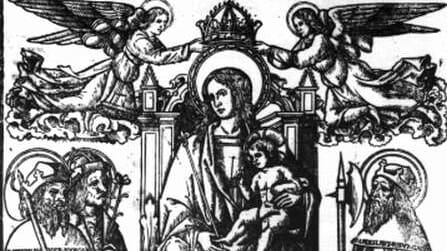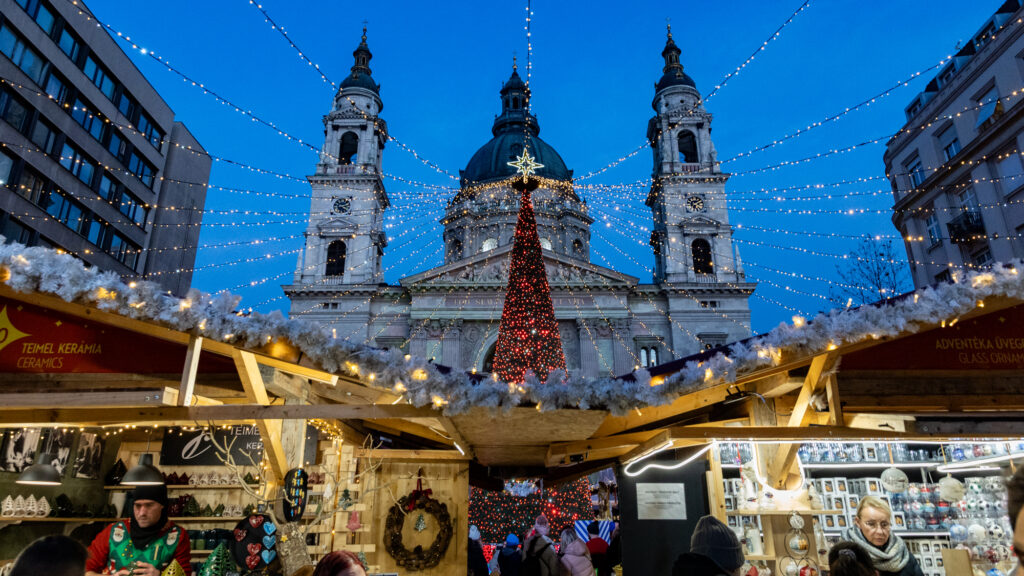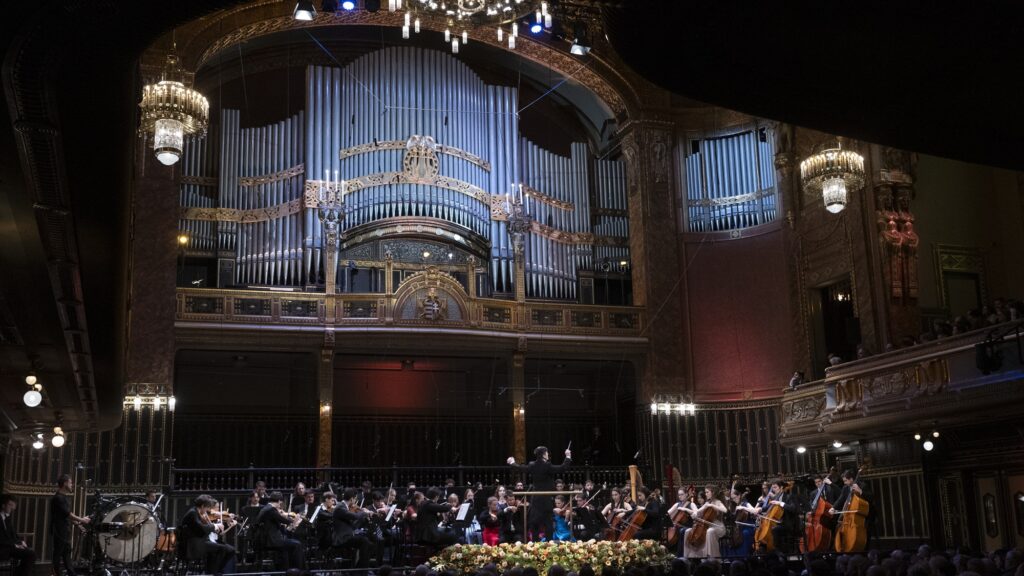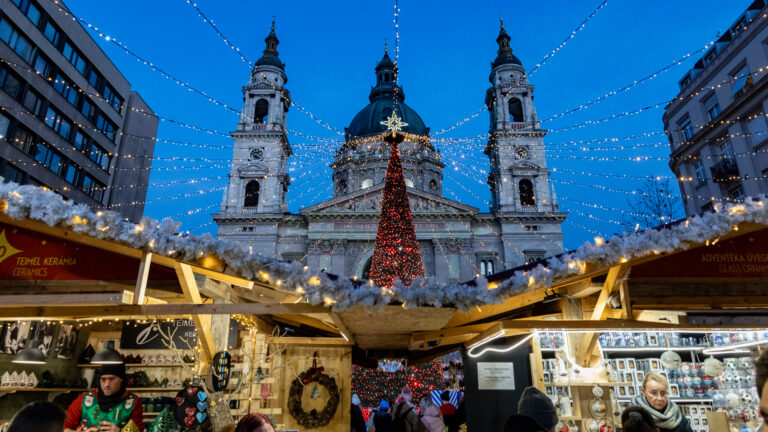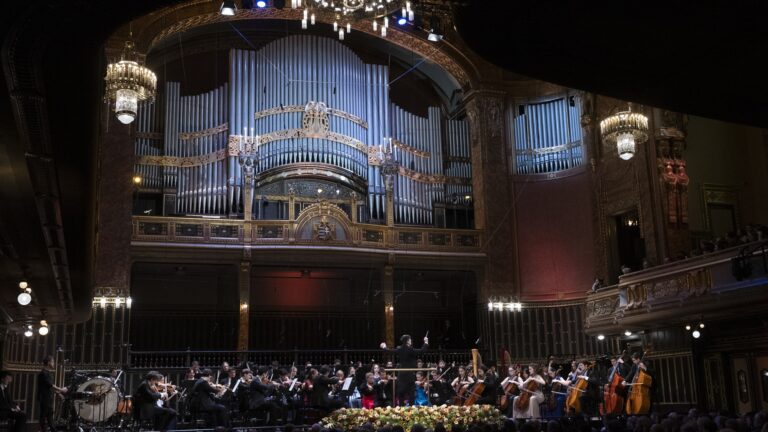The dedication of Hungary to the Virgin Mary is still a well-known fact to most Hungarians. According to legend, the first king of Hungary, St Stephen, entrusted his Kingdom to the Virgin Mary several times between 1031 and his death in 1038, until finally, on the day before his death on 14 August 1038, he dedicated the country to Mary again, leaving no heir. The story of this dedication had a glittering career, thus
from the 18th century onwards Hungary has been known as the Regnum Marianum, or ‘the Kingdom of Mary’.[1]
The use of the term has undergone many transformations through history. It has had a strong anti-Protestant connotation since the Reformation, provoking protests from Protestant churches; it was a symbol of patriotism during the wars against the Ottomans; and between the two world wars, it symbolized the integrity of a dismembered historical Hungary.
To this day, researchers are divided on how the dedication should be viewed, with many doubting its authenticity. Did it really happen in the lifetime of King Stephen, or was it only a product of imagination invented when the struggle between the Pope and the Emperor was at its height around 1100? The dedication was recorded both in the Great Legend of Stephen, which was written around the King’s canonization in 1083, and also in a legend written by Bishop Hartvic around 1100. The story of the dedication is first told in the Great Legend. Firstly, the King dedicated himself and his Kingdom to the Virgin Mary in unceasing prayers and placed the country under her guardianship, and secondly, he repeated this act during the invasion of Hungary by the Holy Roman Emperor Conrad II in 1030. Finally, in the legend written by Hartvic, Stephen entrusted his country to the Virgin Mary before his death, in the following words: ‘Queen of heaven, illustrious restorer of the world, I commit the holy Church with its bishops and clergy, the kingdom with its chief lords and people to your protection in my last prayers, and saying my final farewell to them, into your hands I commend my spirit.’[2] The latest dedication is considered by posterity to be the basis of the tradition, and from the Middle Ages onwards it has been evoked in artistic representations as well.
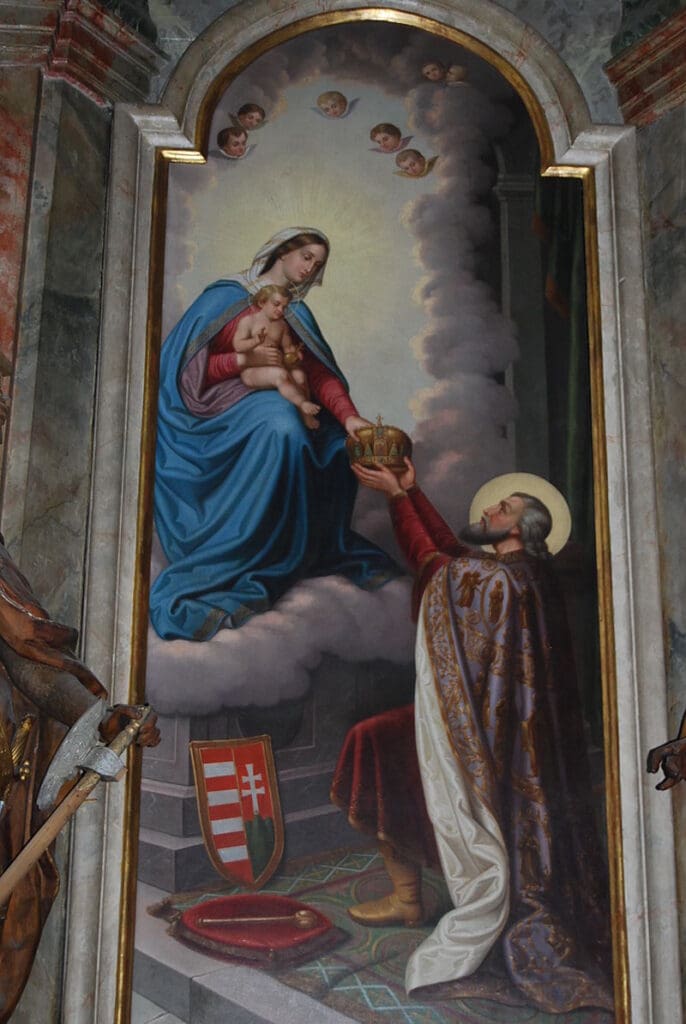
The emphasis on the veneration of Mary in Hungary may seem surprising at first glance, but it is particularly evident in the newly Christianized areas of the European periphery. In Poland, the palace chapel in Poznań, the 10th-century sacral centre of the Piast Dynasty, was dedicated to Mary as well, just as the Archbishop’s cathedral in Gniezno, before St Adalbert, was also patronized by the Virgin herself; in Bohemia, the Czech Prince Spytihněv I dedicated a church to her as early as around 900.[3]
With his dedication to Mary, King Stephen was ahead of the rest of the Christian world, which later made many similar dedications.
Although other saints were also given patronage of different countries in the 11th century, such as James in Hispania and Wenceslas in Bohemia, but no specific act of dedication was associated with them.
Behind this phenomenon, the German and Italian influence can easily be seen, which the best-known missionary martyrs, St Adalbert (d. 997), St Bruno of Querfurt (d. 1009), and St Gerard (d. 1046), also represented and spread in East-Central Europe. The legend of Gerard, who arrived in Hungary from Venice, tells us that he gave sermons on Mary, which ‘the King and the people just listened in astonishment, and all the Christian people were amazed…’
It was during the reigns of Holy Roman Emperors Otto III and Henry II that the church organization in Hungary began to take shape. Numerous documents prove that by the turn of the 10th and 11th centuries, the feasts of Mary had become of great importance in German lands. It was on Candlemas Day, 2 February 962, that Emperor Otto I the Great won the imperial crown. The enthronement of King Stephen’s brother-in-law, Henry II, took place in Aachen on 8 September, and the Nativity of Mary, 8 September, remained a popular feast day throughout the centuries, too. It is therefore safe to assume that the veneration of Mary was brought to the country by the German clergy. Thus, it is also probable that Stephen’s coronation as King of Hungary also took place on one of the feasts of Mary (15 August or 8 September), and not on Christmas Day, as was long assumed.
Of course, the Eastern roots of the veneration of Mary in the time of Otto are obvious since the patroness of Constantinople was Mary herself. On German soil, we can speak of a political veneration of Mary from 972, from the marriage of Otto II to the Byzantine princess Theophanu. Thus, Byzantine influence could have come from the West as well, which may well have supported the Byzantine Orthodox Christian conversion of Hungary before 1000. Little material evidence of this has survived, although it can be assumed that the basilica founded by King Stephen in Fehérvár on the model of Aachen and dedicated to Mary may have had a Byzantine-style apse mosaic.[4] It may have been an Eastern influence, too, that Mary appeared on the reverse of King Stephen’s gold coin, of which there are four known but disputed dates. The image of Mary was surrounded by the inscription ‘Pannonia’, while the obverse depicted the King himself.
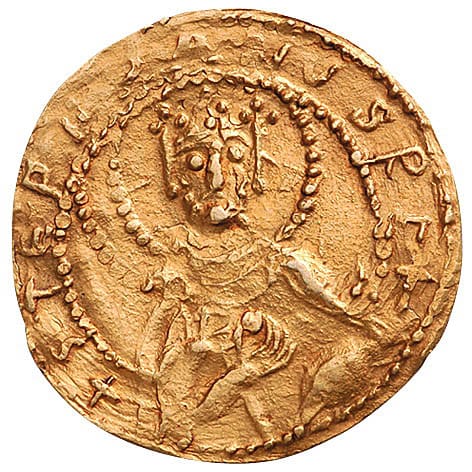
But the dedication to Mary, surprisingly, is not included in the Hungarian chronicles, and, even more surprisingly, not in the liturgical readings, either. Obviously, the editors of the texts at the time did not attach the same importance to this act as they did in later centuries. The turning point in this process was undoubtedly when, at the time of the Investiture Controversy, Pope Gregory VII (d. 1085) and Pope Urban II (d. 1099) reminded the Hungarian kings that King Stephen had dedicated the country to St Peter, which was then understood as a fealty. The popes based their rights over the Kingdom of Hungary and the Church on Rome’s role in the establishment of the Kingdom of Hungary. This was partly true since the Pope had an important role in sending the crown and authorizing the anointing of Stephen. However, by this time it had been forgotten that around 1000 all this was done in close collaboration between the Pope and the Emperor. The dedication of the country to St Peter, as mentioned by the popes, can in no way be regarded as a fealty, since at that time there was harmony between the ecclesiastical and political leaders, and Stephen deliberately wanted to link the Hungarian ecclesiastical organization to Rome. The Polish, Czech and German rulers did the same. In 992, the Polish Prince Mieszko I dedicated his country to St Peter, and Emperor Henry II, King Stephen’s brother-in-law, dedicated the most important ecclesiastical entity he founded, the Bamberg Cathedral, to St Peter and George, and placed it under the direct jurisdiction of Rome. However, references to St Peter around 1100 were already considered a dangerous precedent, which the Hungarian court was also well aware of. It is no coincidence, therefore, that the popes of the Investiture Controversy did not want to know about the dedication to Mary, while the Hungarian sources make no mention of the dedication to St Peter. The dedication of the Kingdom to Mary described in the legends of St Stephen can thus be interpreted as a rejection of the papal claim citing the alleged dedication to St Peter:
the Kingdom of Hungary is protected by the Virgin Mary, who is much more powerful than St Peter.
It is not surprising that modern Hungarian historians have given no credence to the dedication to St Peter, merely classifying it as a ploy of papal propaganda. Yet it is perfectly conceivable that it did happen, as the simultaneous veneration of St Peter and the Virgin Mary were not mutually exclusive at the time.
The Hungarian practice of the time is well illustrated by the fact that Stephen dedicated several bishoprics to Mary (Győr, Vác, Bihar), but the most important Roman patron saints also had churches in the country: St Peter and St Paul on both sides of the Danube, in Pécs and Kalocsa, while St John the Evangelist in Eger. If the King of Hungary did send a letter to the Pope referring to the dedication to St Peter, he did not have any fealty in mind and did not see his decisive apostolic role in the Hungarian church organization as being threatened by such a move.[5]
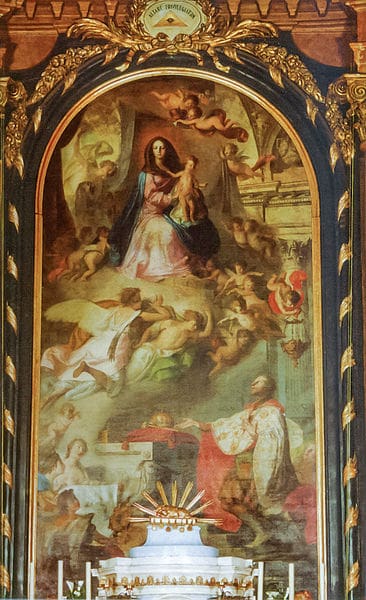
The turn of the Investiture Controversy should not be projected back to the reign of King Stephen, since at the time the papacy posed no threat. Of course, by the end of the 11th century, the memory of the dedication to St Peter had become unpleasant, filled with undesirable political content, thus the Hungarian clerics had it removed from among historical sources. In contrast, the act of dedication to Mary began its illustrious career, and Hungary became the country of the Virgin Mary both in the political and the ecclesiastical discourse. During the reign of King Stephen, the political aspect of the King’s devotion to Mary was only secondary and could be seen much more as the individual devotion of a fervent Christian believer to Mary. However, posterity took a different path and gave it national importance, being the basis for the Regnum Marianum idea of the 18th century. The excellent relations with the papacy and the Holy Roman Emperor at the turn of the millennium and in the first decades of the 11th century fully explain the outstanding veneration of the Virgin Mary, in addition to the veneration of the Roman saints, which makes it highly credible that the dedication of the country had indeed occurred.
[1] Gábor Tüskés and Éva Knapp, ‘Marianische Landespatrone in Europa unter besonderer Berücksichtigung Ungarns’, Jahrbuch für Volkskunde, Vol. 25, 2002, pp. 77–102.
[2] Life of King St. Stephen written by Bishop Hartvic(transl. by Nora Berend and Cristian Gaşpar), in Gábor Klaniczay, Ildikó Csepregi, et al. (eds.), The Sanctity of the Leaders. Holy Kings, Bishops, and Abbots from Central Europe, Eleventh to Thirteenth Centuries, Budapest, New York, Vienna, 2023, p. 157.
[3] Pawel Figurski and Grzegorz Pac, ‘Saints and relics’, in Florin Curta (ed.), The Routledge Handbook of East Central and Eastern Europe in the Middle Ages, 500-1300, London, 2022, pp. 340–341.
[4] Kiss Etele, Piroska-Eirene, and the Holy Theotokos, in Marianne Sághy and Robert G. Ousterhout (eds.), Piroska and the Pantokrator, Budapest, 2019, pp. 261–290.
[5] Benedict Wiedemann, Papal Overlordship and European Princes, 1000–1270, Oxford, 2022, pp. 21–58.
Related articles:

